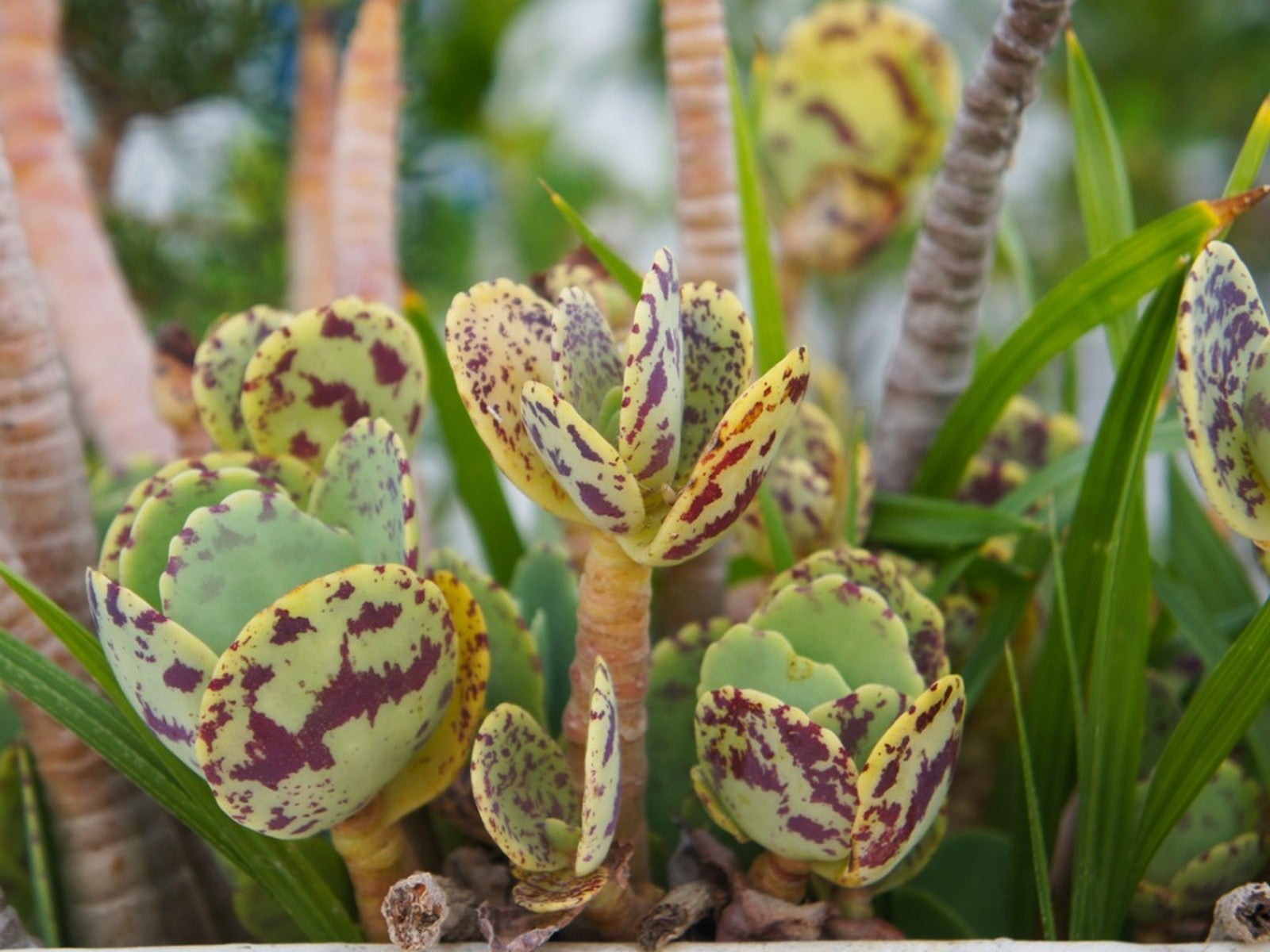Marmorata Succulent Information – What Are Marmorata Succulents


Plants with the scientific surname marmorata are visionary delights. What are marmorata succulents? Marmorata refers to a distinctive marbling pattern on the stems or leaves of a plant. This not only occurs in plants but also to several species of animal, including humans. In the plant trade, marbled patterns are unique and add interest to the plant. Learn how to grow marmorata succulents and enjoy up close and personal this interesting anomaly.
What are Marmorata Succulents?
There are thousands of succulent plant varieties and each one is different and exceptional. Not only are there different sizes and forms, but there are also different patterns and colors. In the group called marmorata, there are a couple of plants that are accessible and easy to grow. Marmorata succulent care is as easy as any un-marbled plant. A little marmorata succulent information can help you decide if these plants are right for your home.
Plants are primarily listed with two names. The first indicates the genera and the second is the specific epithet. The secondary name often indicates a main plant characteristic or may honor the so-called discoverer of the plant. In the case of plants with the epithet, marmorata, the name is from the Latin "marmor," which means marble. It is referring to the unique drips of color that decorate the plant.
Plants in the trade that are cultivated to keep a specific trait are propagated vegetatively to preserve that trait. Growing marmorata succulents is much the same as any succulent. There is both a Lithops and a Kalanchoe that are marmorata and are very easy to find and grow.
Marmorata Succulent Information
Kalanchoe marmorata is a shrub-like succulent that can grow 12 to 15 inches tall (31-38 cm.) and 15 to 20 inches wide (38-51 cm.). The leaves are large and gently scalloped on the edges. The foliage bears purple splotches on the creamy greenish yellow leaves. In spring, this plant adds even more interest as it produces tall clusters of tiny white starry flowers. The flowers make excellent long-lasting cut flowers or can be part of an everlasting bouquet. This plant is also called Penwiper plant.
Lithops marmorata is a clumping succulent. It has the appearance of a few fused small stones and has a characteristic marbled appearance. The "leaves" are plump and are actually the stones. Each has pale gray coloring with marbled detail. The flowers are shiny white, daisy-like, and a little over an inch (2.5 cm.) in diameter. These are very slow growing plants and can live for years in a dish garden without disturbance.
How to Grow Marmorata Succulents
Place marmorata succulents in bright light with a little protection from the harshest sun at midday. When growing marmorata succulents, use a well-draining potting medium such as a cactus mix.
Sign up for the Gardening Know How newsletter today and receive a free copy of our e-book "How to Grow Delicious Tomatoes".
Water when the soil is dry to the touch when you insert your index finger in up to the second knuckle. During the dormant winter months, halve the amount of water you give the plant.
Succulents rarely need fertilizing. Feed with a diluted plant food in early spring as growth resumes.
Marmorata succulent care is very straightforward. When plants flower, cut off the spent stem and allow the plant to dry out for a week. Enjoy these distinctive succulents for years to come.

Bonnie Grant is a professional landscaper with a Certification in Urban Gardening. She has been gardening and writing for 15 years. A former professional chef, she has a passion for edible landscaping.